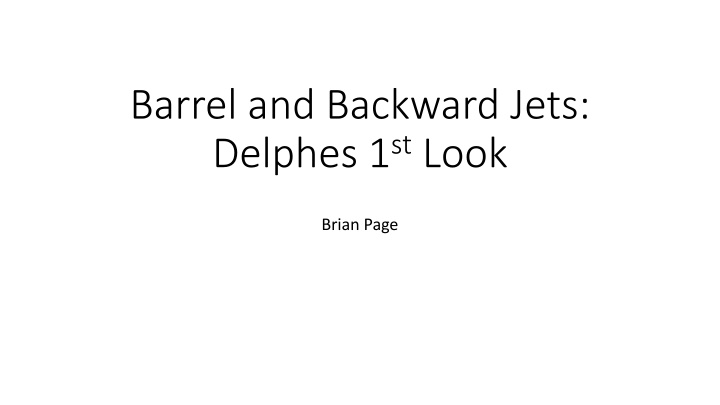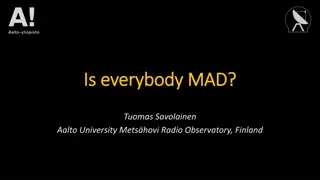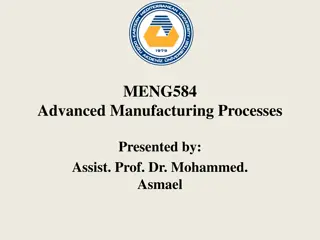Study on Jet Energy Resolution and Scale Definitions in Delphes Simulation
Investigating the effect of HCal resolutions on jet reconstruction in the barrel and electron endcap regions using Delphes simulation. Analyzing jet energy resolution and scale definitions, comparing different models and scenarios, and exploring the impact of including or excluding neutral hadrons in jet-finding processes. The study highlights varying resolutions and performance metrics in different energy ranges, emphasizing potential improvements and challenges in jet reconstruction accuracy.
Uploaded on Oct 07, 2024 | 2 Views
Download Presentation

Please find below an Image/Link to download the presentation.
The content on the website is provided AS IS for your information and personal use only. It may not be sold, licensed, or shared on other websites without obtaining consent from the author.If you encounter any issues during the download, it is possible that the publisher has removed the file from their server.
You are allowed to download the files provided on this website for personal or commercial use, subject to the condition that they are used lawfully. All files are the property of their respective owners.
The content on the website is provided AS IS for your information and personal use only. It may not be sold, licensed, or shared on other websites without obtaining consent from the author.
E N D
Presentation Transcript
Barrel and Backward Jets: Delphes 1stLook Brian Page
Introduction Jets which go into the barrel / electron endcap will be low-x and low energy important for photoproduction as well as other higher order processes Evaluate the effect of HCal resolutions on jet reconstruction in barrel / electron endcap Default Delphes ATHENA model Barrel: E/E = 100%/ E 10% Electron Endcap: E/E = 50%/ E 10% Alternate models: GEANT studies show we can expect a constant resolution for energy ranges appropriate for the barrel with values depending on barrel ECal thickness. Also degrade electron endcap resolution Barrel Mod 1: E/E = 27% Barrel Mod 2: E/E = 35% Electron Endcap: E/E = 100%/ E 10% Also look at case where we do not include Eflow neutral hadrons in jet-finding Simulated 18x275 NC DIS with Q2 > 10 GeV with all beam effects included
Jet Energy Resolution & Scale Definitions Pick the highest Pt Eflow jet find matching particle level jet (Smallest delta R < 0.5) Construct (Eflow-Particle)/Particle Jet energy distribution vs eta JER is the RMS of the distribution and JES is the average Look at Eflow jets with minimum Pt > 5 GeV and 10 GeV
JES / JER Summary: Default ATHENA Model Jet energy resolutions and scales blow up in the barrel Oddly, JES and JER seem to be worse for higher Pt jets Believe this is somewhat a phase space effect for Pt > 10 GeV there is more room for tails (compare pp 8 and 9)
JES / JER Summary: Constant 35% Energy Res The constant energy resolution ( E/E = 35%) drastically improves JES / JER in the barrel region Significant degradation in the electron endcap due to the switch from 50%/ E 10% to 100%/ E 10%
JES / JER Summary: Constant 27% Energy Res Better JES / JER for constant energy resolution of 27%
JES / JER Summary: No Neutral Hadrons What happens if we construct jets from only track and photon Eflow objects? See slightly worse JES and JER behavior in the barrel but dramatic improvement in the electron endcap Back to conclusion that HCal in the electron endcap region may be better as a veto?
Eflow Vs Particle Jet Energy (Default): Barrel Default barrel HCal resolution leads to a sizable tail of jets which are reconstructed at much higher energy than they were generated with This leads to the large scale and resolution values We can also see why scale and resolution are worse for Eflow jet Pt > 10 GeV there is more phase space at lower particle jet Pt available for a given Eflow jet Pt than at Eflow jet Pt of 5 GeV
Eflow Vs Particle Jet Energy (35%): Barrel The population of this tail region is significantly reduced for the constant HCal resolution case Leads to better overall JES / JER and less severe discrepancy between low and high Pt curves
Eflow Vs Particle Jet Energy (27%): Barrel The behavior of the 27% resolution is even better Better resolutions are better ;)
Eflow Vs Particle Jet Energy (No Neutral Had Eflow): Barrel Removing Neutral Hadron Eflow objects from the jet finder dramatically reduces the number of particle level jets which get reconstructed at significantly larger energies In the barrel, we pay the price in missing the neutral component of jets leading to an excess to the lower right of the plot Leads to the negative JES seen above
Conclusions and Next Steps Took a look at jet energy scale and resolution as a function of pseudorapidity with a focus on the barrel and electron endcap regions Flat barrel HCal resolutions give much better performances compared to default resolution 50% -> 100% resolution for electron endcap HCal leads to much worse performance Neglecting Neutral Hadron Eflow objects in electron endcap led to reasonable behavior Want to start looking at this in full simu calorimeter / track matching and subtraction Continue to explore issues using fast simu























